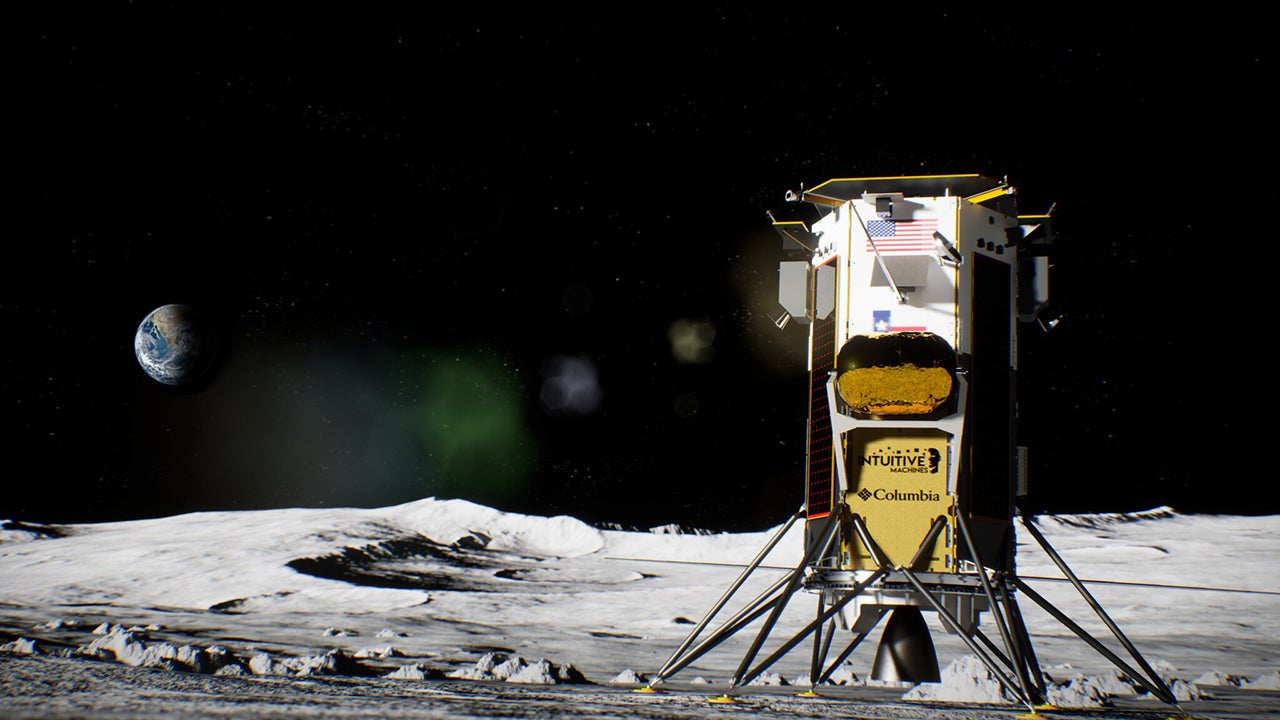Scientists have managed to successfully troubleshoot their way to the lunar surface, after uploading an eleventh hour software patch to their uncrewed Odysseus lander hours before it made its historic landing attempt.
Pulling off a soft landing on the surface of another world- AKA touching down in a way that doesn’t leave your spacecraft in pieces - remains one of the most challenging aspects of solar system exploration encountered to date. Things get even tougher when the key piece of navigational equipment that you’re relying on to safely guide your spacecraft to the surface, unexpectedly breaks mere hours prior to the grand finale.
This is exactly the scenario faced by scientists and engineers of the Houston-based company Intuitive Machines, as their spacecraft braved the inhospitable void of space ahead of a historic lunar landing attempt.
“Odysseus has a new home” https://t.co/oVgLobxH8T
— Intuitive Machines (@Int_Machines) February 22, 2024
Intuitive Machines named its lunar lander after the mythological ancient Greek hero Odysseus, who suffered countless trials as he strove to make his way home following his participation in the siege of Troy. The landing attempt slated for February 23 was set to be the first time that a U.S. mission would set down on the lunar surface since Apollo 17 touched down In 1972.
However, in the runup to final descent, mission handlers discovered that Odysseus’ laser range finder - a vital piece of navigational equipment needed to safely guide the spacecraft down to the lunar surface - was completely inoperable. Unremedied, this catastrophic development would have robbed the spacecraft of its ability to pinpoint its location during descent, and avoid hazards on the lunar surface such as boulders and slopes as it came in for landing.
Odysseus’ salvation came in the form of NASA’s Navigation Doppler Lidar for Precise Velocity and Range Sensing (NDL) instrument, which was one of six experiments that Intuitive Machines had been contracted to carry down to the lunar surface on the behalf of the U.S. agency. Scientists and engineers worked swiftly to improvise an ad hoc software patch that would allow two of the NDL’s range-finding laser beams to work in concert with Odysseus’ camera’s to replace the navigational capabilities lost in the earlier malfunction.
Incredibly, the quick thinking and fancy coding worked admirably, allowing the spacecraft to make a powered descent that culminated in a soft landing near the lunar south pole at 6.23pm ET. Following a tense delay, Odysseus’ mission director was able to confirm that the lander was standing upright, and transmitting from the surface of the Moon.
“Congratulations to everyone involved in this great and daring quest at Intuitive Machines, SpaceX, and right here at NASA,” said NASA administrator Bill Nelson in a statement following the landing. “Odysseus has taken the Moon, this feat is a giant leap forward for all of humanity.”
The team is now working to retrieve the first images from the lunar lander, and to collect a range of data on the lunar environment that will help NASA and its partners plan for upcoming missions for its crewed Artemis Program. Odysseus' succesful touch down came in the wake of a failed bid to land on the Moon by the U.S. company Astrobotic, whose Peregrine lander was directed to burn up in Earth's atmosphere after a propulsion leak rendered a lunar landing impossible. Japan was able to land its SLIM spacecraft soon after on January 19, though an issue during final descent left the spacecraft's solar cells in jeoperdy.
Image credit: Intuitive Machines
Anthony is a freelance contributor covering science and video gaming news for IGN. He has over eight years experience of covering breaking developments in multiple scientific fields and absolutely no time for your shenanigans. Follow him on Twitter @BeardConGamer






